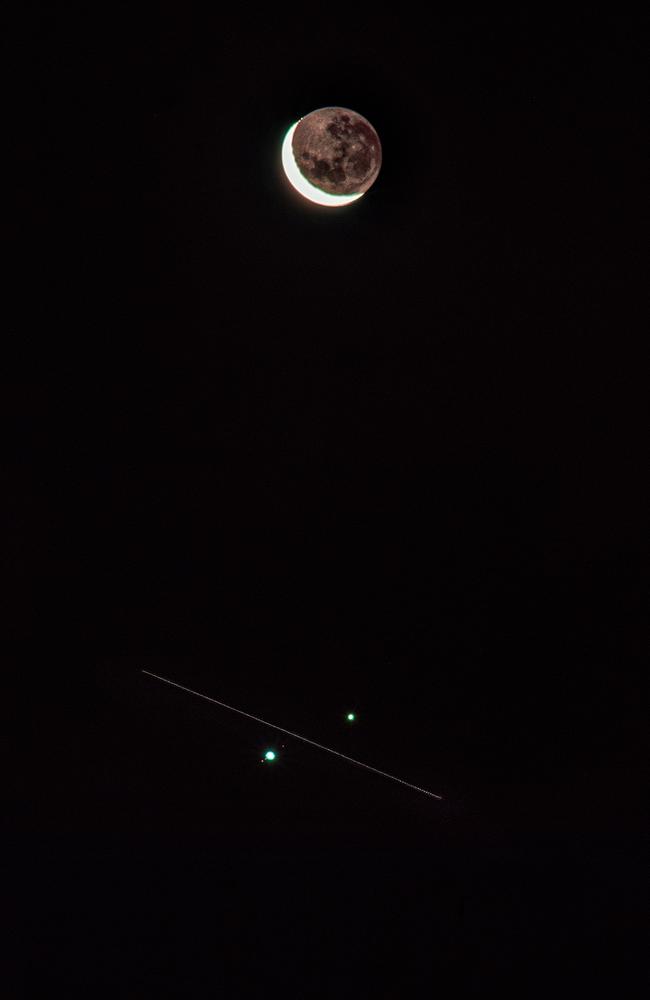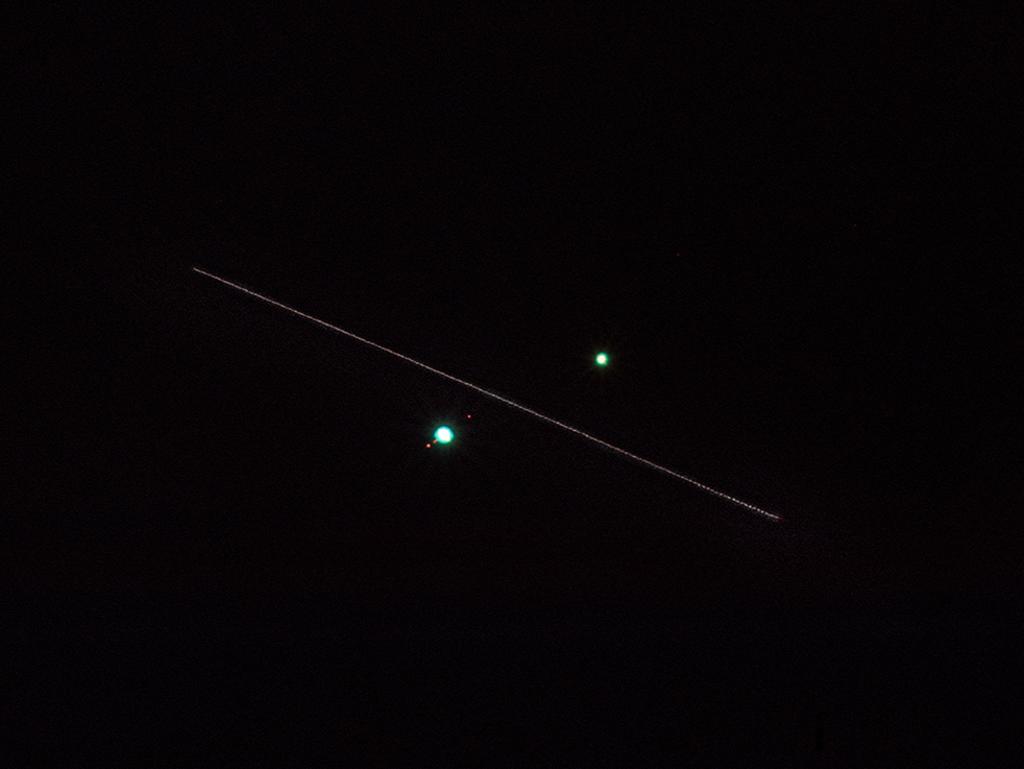International Space Station passes through Jupiter and Saturn during Great Conjunction of the two planets
A chance discovery had a NSW photographer racing to capture a once-in-a-lifetime image as Jupiter and Saturn appeared closer together than they have in almost four centuries.
A NSW photographer has managed to capture an image that encapsulates a once-in-a-lifetime astronomical event and one of humankind’s greatest engineering achievements in one go.
The Great Conjunction of Jupiter and Saturn happened on Monday night, with the two planets appearing closer to each other in the night sky than they had in close to four centuries.
In the lead-up, aeronautical engineer and astrophotography enthusiast Jason De Freitas, 29, managed to capture the incredible moment the International Space Station passed between the two planets.
RELATED: Jupiter, Saturn combine for rare “Christmas Star”

RELATED: Australia’s moon mission revealed
The incredible shot (which you can also order as a print of your own) was the result of some quick planning after a chance find.
“I discovered I had the opportunity to capture this event only the day beforehand, mostly by chance,” Mr De Freitas told news.com.au.
Cloudy weather meant the only day he had the opportunity to witness the conjunction was on December 17 – last Thursday.
While the path of planets can be predicted centuries in advance, the ISS is harder to track.
Mr De Freitas said that due to atmospheric drag you can only predict where the ISS will be a couple of weeks in advance, even then with only moderate accuracy.
He was able to predict its path using planetarium software and online tools.
When he discovered there was a chance to make the shot, he knew he had to go for it.
“This was most likely a once in a lifetime chance with the weather, planets and space station aligning within a drivable distance so it was one of those situations where you don‘t even consider not attempting it,” he said.
“The very moment I discovered the opportunity, I was driven with excitement to do my best to make it happen.”
RELATED: ‘Successful’ test ends in dramatic fireball

RELATED: Former space boss drops wild alien claim
And make it happen, he did.
Mr De Freitas got in the car and drove an hour north to align the station’s path between the two planets, having to search for a vantage point facing west with a view of the horizon.
He found the “perfect lookout” in Mittagong to capture the rare image with a long exposure showing its transit.
“The chance of this lining up was incredibly rare – there have been many photographs of lunar and solar ISS transits but I have never seen one through a conjunction,” he said.
He shared the image and video on his Instagram account jase.film, where more than 16,000 people follow his work.
As if it wasn’t hard enough to get the shot to begin with, Mr De Freitas decided to make it even more difficult by shooting it on film using a camera more than three decades old.
“For astrophotography, shooting on film is by far the inferior medium. Part of me just enjoys the extra challenge of achieving my photos on a more difficult medium and the other part of me is drawn to creating a negative or slide because the result is an object that has directly interacted with the photons from these astronomical objects, it’s immensely more satisfying to me and I find the slides I create to be very special.”
He didn’t need to use a telescope but he said “you’d be forgiven for thinking” the massive 600mm f/4 lens he used on the end of his Pentax 67 was one.
He also used a digital SLR to capture the event on video, but as someone who takes an “experimental” approach, he still prefers taking photos on old film cameras.
“There is so much more variety in terms of formats in old film cameras that you can always use it as a source for creativity.
“I learnt photography in the digital age but my passion for it ignited through film and the change in perspective to photography the process forces upon you. My analog astrophotography journey has just been a progression of pushing things further and further to see how far I can take it.”
Mr De Freitas said his next challenge was seeing what he can come up with next, now that he’s captured a once-in-a-lifetime event on film.



